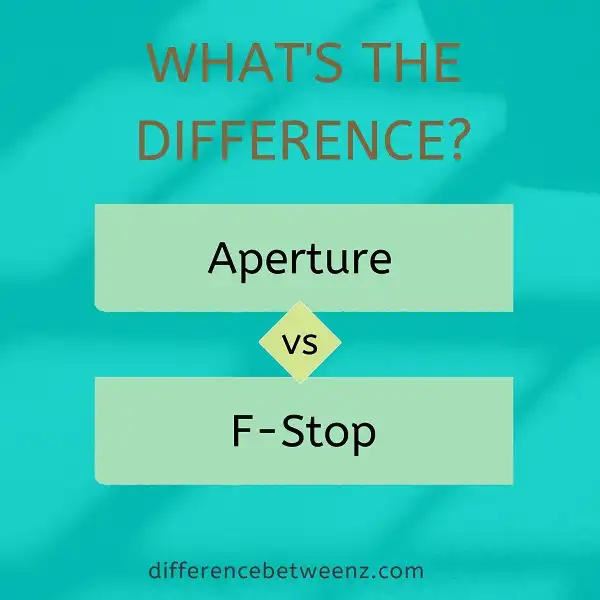There is a lot of confusion between aperture and F-stop. In this blog post, we will clear up the confusion and discuss the difference between aperture and F-stop. We will also explore how these settings impact your photography. So, let’s get started!
What is Aperture?
Aperture is a parameter of a camera lens that expresses the size of the opening through which light passes to reach the sensor. A small aperture corresponds to a large f-number (e.g. f/16) and vice versa. A large aperture lets more light into the camera, which is helpful in low-light situations. It also gives a shallower depth of field, which means that objects closer or further away from the subject will be less in focus.
A small aperture does the opposite – it lets less light into the camera but gives a greater depth of field, meaning that objects closer or further away from the subject will be more in focus. Aperture is just one of three elements that control the amount of light that reaches the sensor (the other two being shutter speed and ISO). When used together, these three parameters give the photographer a great deal of control over the final image.
What is F-Stop?
F-stop is a measure of the amount of light that reaches the sensor (or film) inside the camera. It is determined by the size of the aperture, which is the hole in the lens through which light passes. The larger the aperture, the more light that enters the camera, and the smaller the F-stop number. For example, an F-stop of 1.4 allows twice as much light to enter the camera as an F-stop of 2.0. F-stop is also known as “focal ratio” or “relative aperture.” It is represented by the letter “f” followed by a number, such as f/1.4 or f/2.0.
Difference between Aperture and F-Stop
Aperture and F-Stop are two terms that are often used interchangeably, but they actually refer to two different things. The aperture is the opening in the lens through which light passes. The size of the aperture can be adjusted, and this is represented by the f-stop number. A smaller f-stop number corresponds to a larger aperture, while a larger f-stop number corresponds to a smaller aperture.
The f-stop number also controls the depth of field, which is the portion of the image that appears in focus. A lower f-stop number results in a shallow depth of field, while a higher f-stop number results in a deeper depth of field. When taking photographs, it is important to consider both the aperture and the f-stop in order to get the desired effect.
Conclusion
Aperture and f-stop are two important camera settings that you should understand if you want to take your photography skills to the next level. They control the amount of light that enters the lens, which affects the final image. We’ve explained the difference between aperture and f-stop in detail, so make sure to give it a read before your next photo shoot.


